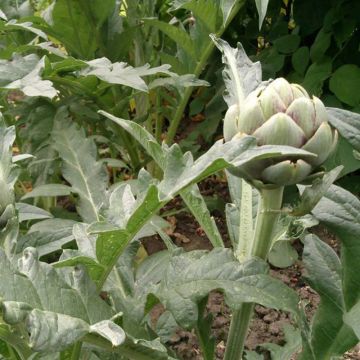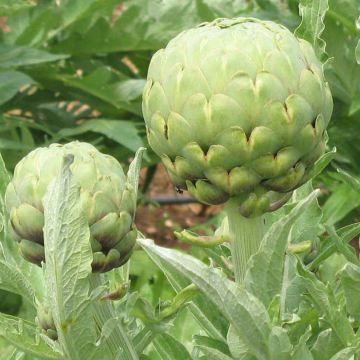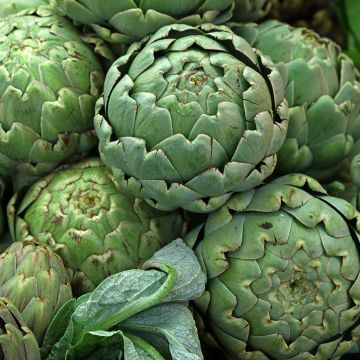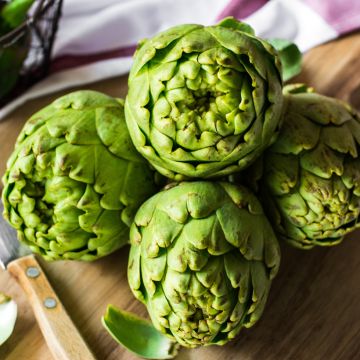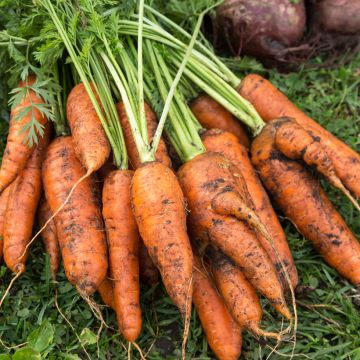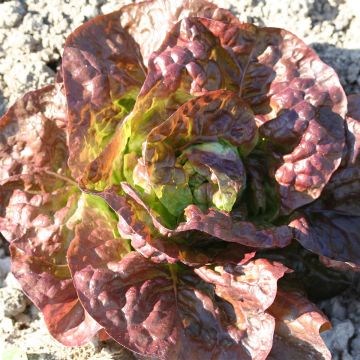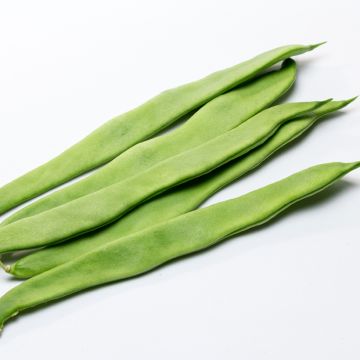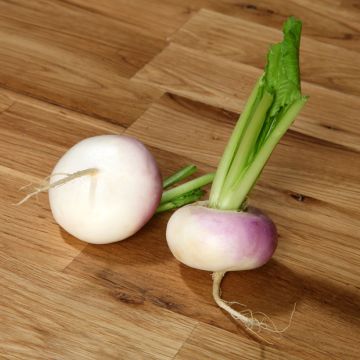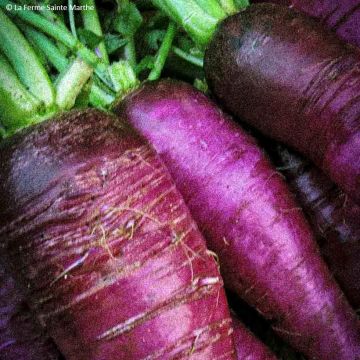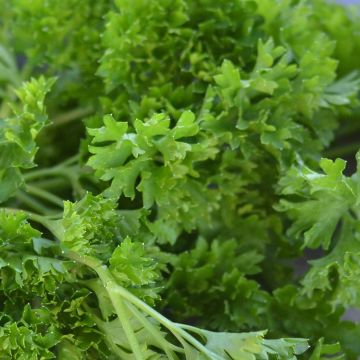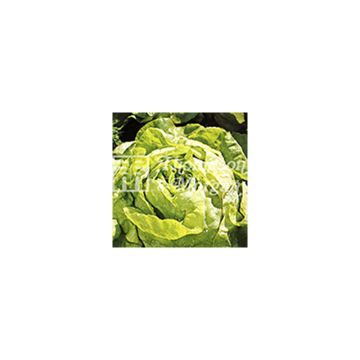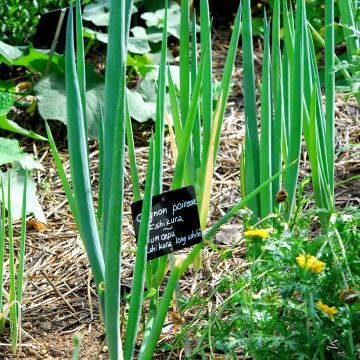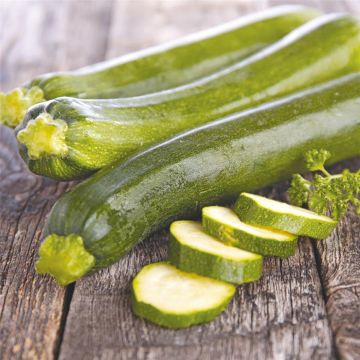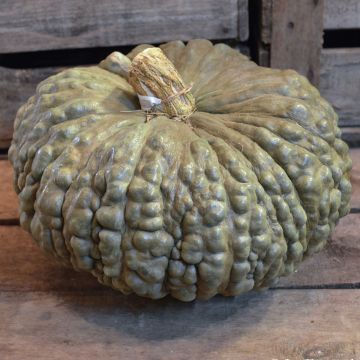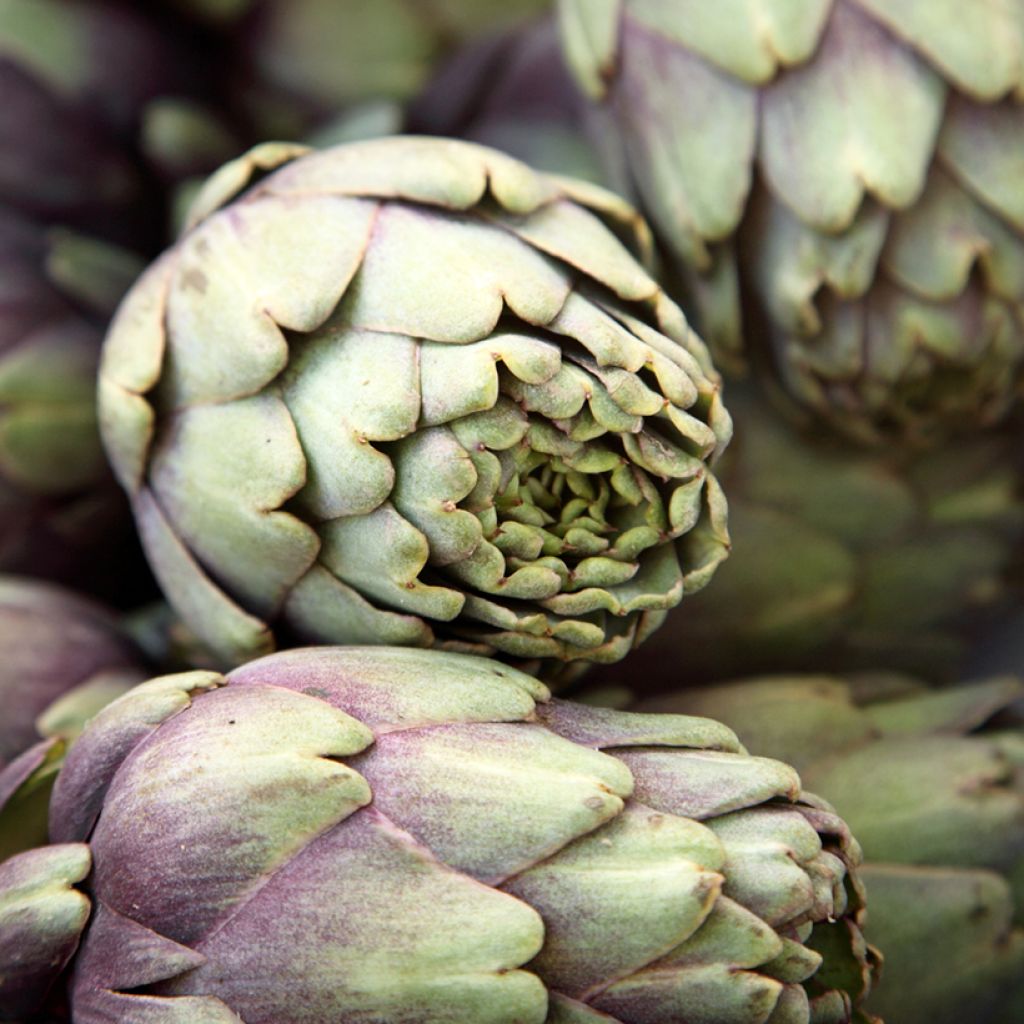

Artichoke Violet de Provence - Cynara scolymus
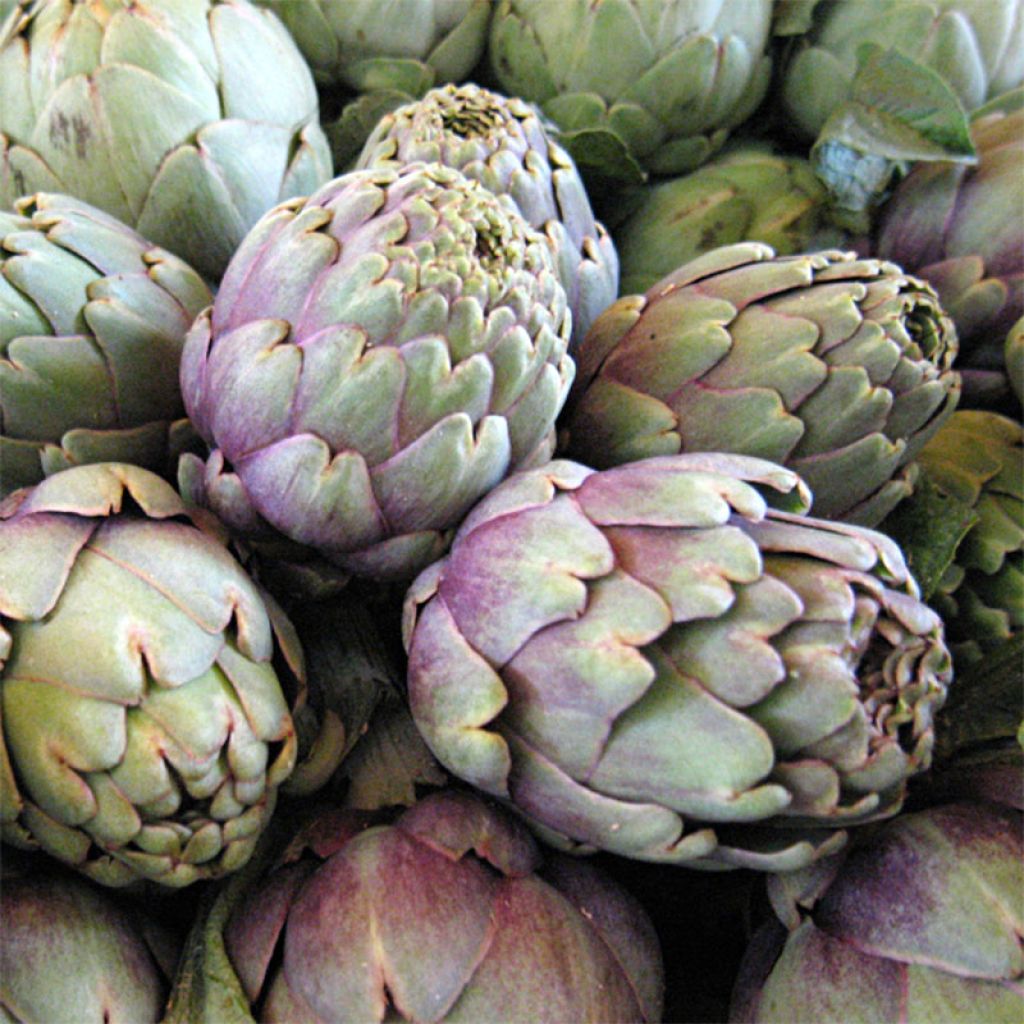

Artichoke Violet de Provence - Cynara scolymus
Artichoke Violet de Provence - Cynara scolymus
Cynara scolymus Violet de Provence
Globe artichoke, purple artichoke, French artichoke
Why not try an alternative variety in stock?
View all →This plant carries a 6 months recovery warranty
More information
We guarantee the quality of our plants for a full growing cycle, and will replace at our expense any plant that fails to recover under normal climatic and planting conditions.
Seed-only orders are dispatched by sealed envelope. The delivery charge for seed-only orders is €3.90.
Description
'Violet De Provence' artichoke is a productive variety that is quite sensitive to the cold. This perennial vegetable is cultivated for its rounded, purple flower heads that turn green when ripe. They have an edible base (heart) and fleshy, oval leaves (bracts). Sow from February to March and harvest 6 to 7 months later.
Artichoke, in Latin Cynara scolymus, belongs to the Asteraceae family and the Cynara genus alongside the cardoon and the thistle. Commonly used by ancient Greeks and the Romans, it was introduced in France during the 15th century where it has since become a very popular vegetable.
Although Artichoke is a perennial, plants are often only cultivated for two or three years. The upright stems can reach a height of 2 metres. Leaves are large and deeply lobed. The immature flower buds are best picked and eaten before they enter full bloom.
A famous French comedian named Coluche used to say about artichoke "when you have finished eating, you have more in your plate than when you started." Although there may be truth in that, almost all parts of the flower head are edible. The heart and base of the leaves are often steamed and eaten with vinaigrette, while the tougher bracts can be prepared in a similar way to cardoon, by blanching them in boiling water.
Artichoke has antianemic, antitoxic, stimulating properties and contains vitamins A, B1, B2, C. It has a beneficial effect on the liver.
Artichoke likes rich and well-drained soil. Being a Mediterranean plant, it dreads humidity and frost. It will yield better results in mild climates, preferably with a mound of soil around its base to improve drainage.
Harvesting and preservation: pick the flower heads as and when required. The bracts should still be tightly packed together.
Useful tip: In areas with harsh winters, protect your plants under a thick layer of mulch. Keep a close eye on your plants as aphids love them!
Report an error about the product description
Harvest
Plant habit
Foliage
Botanical data
Cynara
scolymus
Violet de Provence
Asteraceae
Globe artichoke, purple artichoke, French artichoke
Mediterranean
Perennial
Other Artichoke seeds
Planting and care
Sowing:
Sow from February to March in pots. Put 2 or 3 seeds per pot. Thin out by keeping the strongest seedling and plant out in its final position about 2 months after sowing. Leave about 80 cm to 1 meter between each plant.
In milder climates, Artichoke can be sown directly outdoors in seed pockets, spaced 80 cm to 1 m part.
Care:
Artichoke plants will benefit from regular hoeing and weeding. Water if necessary. Good mulching and building a mound of soil around the base of the plant will help keep the ground moist but not waterlogged. In October-November, cut the stems that produced flower heads a few centimetres from the ground.
Seedlings
Care
Intended location
-
, onOrder confirmed
Reply from on Promesse de fleurs
Vegetable seeds
Haven't found what you were looking for?
Hardiness is the lowest winter temperature a plant can endure without suffering serious damage or even dying. However, hardiness is affected by location (a sheltered area, such as a patio), protection (winter cover) and soil type (hardiness is improved by well-drained soil).

Photo Sharing Terms & Conditions
In order to encourage gardeners to interact and share their experiences, Promesse de fleurs offers various media enabling content to be uploaded onto its Site - in particular via the ‘Photo sharing’ module.
The User agrees to refrain from:
- Posting any content that is illegal, prejudicial, insulting, racist, inciteful to hatred, revisionist, contrary to public decency, that infringes on privacy or on the privacy rights of third parties, in particular the publicity rights of persons and goods, intellectual property rights, or the right to privacy.
- Submitting content on behalf of a third party;
- Impersonate the identity of a third party and/or publish any personal information about a third party;
In general, the User undertakes to refrain from any unethical behaviour.
All Content (in particular text, comments, files, images, photos, videos, creative works, etc.), which may be subject to property or intellectual property rights, image or other private rights, shall remain the property of the User, subject to the limited rights granted by the terms of the licence granted by Promesse de fleurs as stated below. Users are at liberty to publish or not to publish such Content on the Site, notably via the ‘Photo Sharing’ facility, and accept that this Content shall be made public and freely accessible, notably on the Internet.
Users further acknowledge, undertake to have ,and guarantee that they hold all necessary rights and permissions to publish such material on the Site, in particular with regard to the legislation in force pertaining to any privacy, property, intellectual property, image, or contractual rights, or rights of any other nature. By publishing such Content on the Site, Users acknowledge accepting full liability as publishers of the Content within the meaning of the law, and grant Promesse de fleurs, free of charge, an inclusive, worldwide licence for the said Content for the entire duration of its publication, including all reproduction, representation, up/downloading, displaying, performing, transmission, and storage rights.
Users also grant permission for their name to be linked to the Content and accept that this link may not always be made available.
By engaging in posting material, Users consent to their Content becoming automatically accessible on the Internet, in particular on other sites and/or blogs and/or web pages of the Promesse de fleurs site, including in particular social pages and the Promesse de fleurs catalogue.
Users may secure the removal of entrusted content free of charge by issuing a simple request via our contact form.
The flowering period indicated on our website applies to countries and regions located in USDA zone 8 (France, the United Kingdom, Ireland, the Netherlands, etc.)
It will vary according to where you live:
- In zones 9 to 10 (Italy, Spain, Greece, etc.), flowering will occur about 2 to 4 weeks earlier.
- In zones 6 to 7 (Germany, Poland, Slovenia, and lower mountainous regions), flowering will be delayed by 2 to 3 weeks.
- In zone 5 (Central Europe, Scandinavia), blooming will be delayed by 3 to 5 weeks.
In temperate climates, pruning of spring-flowering shrubs (forsythia, spireas, etc.) should be done just after flowering.
Pruning of summer-flowering shrubs (Indian Lilac, Perovskia, etc.) can be done in winter or spring.
In cold regions as well as with frost-sensitive plants, avoid pruning too early when severe frosts may still occur.
The planting period indicated on our website applies to countries and regions located in USDA zone 8 (France, United Kingdom, Ireland, Netherlands).
It will vary according to where you live:
- In Mediterranean zones (Marseille, Madrid, Milan, etc.), autumn and winter are the best planting periods.
- In continental zones (Strasbourg, Munich, Vienna, etc.), delay planting by 2 to 3 weeks in spring and bring it forward by 2 to 4 weeks in autumn.
- In mountainous regions (the Alps, Pyrenees, Carpathians, etc.), it is best to plant in late spring (May-June) or late summer (August-September).
The harvesting period indicated on our website applies to countries and regions in USDA zone 8 (France, England, Ireland, the Netherlands).
In colder areas (Scandinavia, Poland, Austria...) fruit and vegetable harvests are likely to be delayed by 3-4 weeks.
In warmer areas (Italy, Spain, Greece, etc.), harvesting will probably take place earlier, depending on weather conditions.
The sowing periods indicated on our website apply to countries and regions within USDA Zone 8 (France, UK, Ireland, Netherlands).
In colder areas (Scandinavia, Poland, Austria...), delay any outdoor sowing by 3-4 weeks, or sow under glass.
In warmer climes (Italy, Spain, Greece, etc.), bring outdoor sowing forward by a few weeks.

































